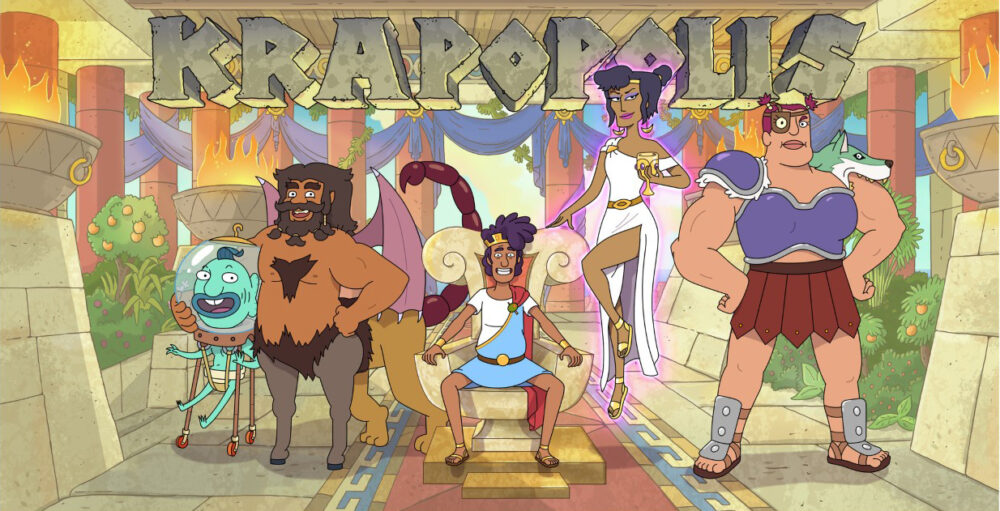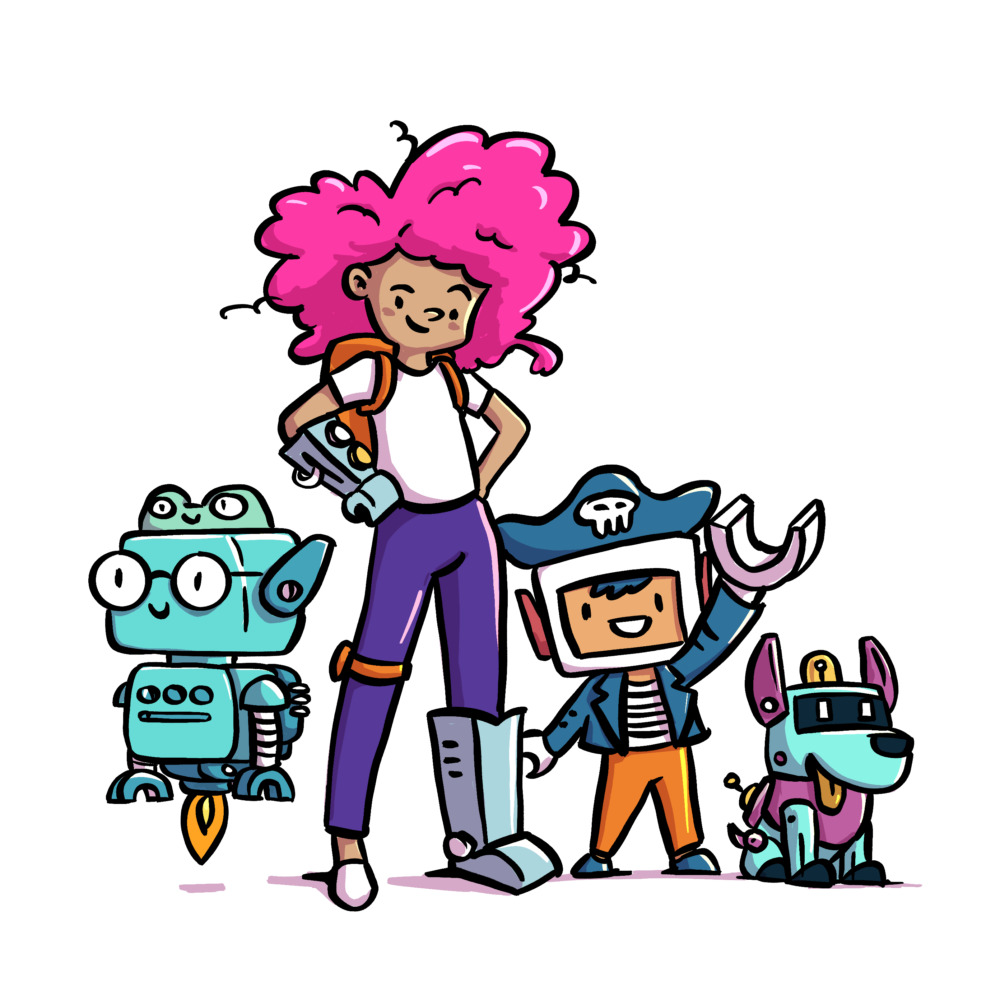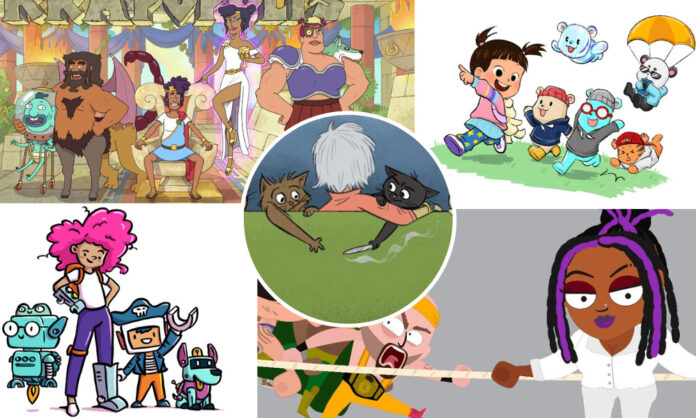***This article originally appeared in the Sept./Oct. ’22 issue of Animation Magazine (No. 323)***
Technology and animation have always been joined at the hip. Film made animation possible, television spread it to every corner of the globe and computers took it to new levels of creativity.
So it should be no surprise that animation is a hotbed of experimentation for new technologies such as Non-Fungible Tokens, better known as NFTs, which are part of the next generation of internet technology referred to as Web3. Both Web3 and NFTs have struggled for broad understanding and acceptance — a goal hindered by the risks involved in investing in NFTs and frequent scams involving the technology.
But that hasn’t stopped animation from experimenting with the new tech. To date, the experiments have had less effect on the actual production of animation, but as the trio of accounts below show, have already been shown to have tremendous impact in bringing in new voices, building fan-based communities and connecting creators and fans in new ways.
One of the most high-profile projects is Dan Harmon’s new animated series Krapopolis which is set to debut on FOX TV next year, but Web3 technology has already given it a head start on building a community and an audience.
Krapopolis is set in ancient Greece and is about mortals trying to build from scratch humanity’s first city. “They’re trying to figure out all the things that are obvious to us that are not yet obvious to the people on the first civilization,” says Matt Bilfield, project lead for Krapopolis at FOX’s Blockchain Creative Labs. “What’s cool about the Web3 component that we’re building in is it’s kind of our version of going through that same process of teaching people how this new technology can impact the growth and the building of a community and fandom of a show.”

Game of Krap Chickens
What does that mean? Well, by the time you read this article, Krapopolis.com will already have minted 10,420 unique NFTs called “Krap Chickens.” All the attributes of these chickens are based on elements in the show that sharp-eyed fans will be able to search out as Easter eggs, Bilfield says.
They also grant owners access to a screening room where episodes will be shown early, as well as behind-the-scenes content and a store filled with exclusive merchandise, Bilfield says.

Token owners also will get to vote on how certain aspects of the show will play out, such as which weapon a character will carry into battle or which background element might be incorporated. “You can essentially take part in some decision making within the show,” says Bilfield. “The next thing is we’re going to start figuring out ways to incorporate the chickens themselves.”
Chickens also will lay eggs daily in the wallet of their owners. The eggs are non transferable ERC-20 tokens, and only work for the egg’s original owner; a chicken will stop laying eggs if it’s sold. This allows for a kind of fandom ranking, where fans with the most eggs can be recognized for the level of their fan engagement. And plans are afoot for additional ways for the most devoted fans to earn even more eggs, and rewards for those who accumulate them.
The results have so far paid off, with the Krapopolis Discord channel boasting around 15,000 members, many of which are creating fan art for a show that hasn’t aired a single episode. “I think that this experience is really paving the way for the way that shows can be marketed in the future, using the communities to sort of drive that interest level,” Bilfield says.

Animation company Toonstar and Sixth Wall, the digital arm of actress Mila Kunis’ Orchard Farm Productions, have jumped into Web3 in a big way with the online animated series The Gimmicks.
Sixth Wall came to the project in the wake of its first NFT-based animated series, Stoner Cats, says producer Lisa Sterbakov. While the show, which sold NFTs of individual cats, was a success, there was a desire to build content directly with a community.
“We also heard a lot of feedback from the Stoner Cats community on, ‘We want content faster. We want more direct interaction and direct involvement in the content,’” Sterbakov says.
That lead to a production partnership with Lindsey McInerney, who while working for AB InBev — perhaps better known as Anheuser-Busch — wrote in 2020 an influential thesis on the Metaverse, crypto and Web3. “The thesis there was that if you abstract the business of beer away from ABI, they’re actually an entertainment business,” she says. “They bring people together to be entertained and are the world’s largest sponsor of sport media entertainment. And so a lot of it was sort of rooted in that.”

Ready to Rumble
Inspired by shows like South Park, The Gimmicks is about a group of washed-up former professional wrestlers voiced by wrestling talents including Luke “Doc” Gallows, Karl “Machine Gun” Anderson and Rocky Romero.
The characters have been entered into a competition bracket where the community votes will eventually decide on a winning character that will get its own full episode.
“We actually hit a million DIC Punches,” says Sterbakov. ”So even though we only have 10,000 tokens, and we have about 4,000 people on our community, they have interacted on chain in this project a million times.”
The show sold back in March 10,000 NFTs, each featuring a unique character. The NFTs were minted on the Solana blockchain because it enabled low fees and has a low environmental impact, Sterbakov says. While those tokens aren’t needed to watch episodes, which drop weekly online, they do come with benefits.

At the end of each episode, there’s a chance for token holders to vote on some aspect of how the story will continue. And for every vote, a token holder receives what’s called a “DIC Punch.” (Sterbakov is quick to point out it stands for “diverse inclusive community.”)
Additionally, each token’s character has a wiki page where the NFT owner can log in from their Web3 wallet and create a backstory about their character. Other token holders can read the pages and use their DIC Punches to vote for the ones they like, showing which characters are most popular in the overall community.
Animation is perfectly suited to this kind of experiment, which McInerney says she expects is the starting point of a new evolution for content.
“I think you’ll keep seeing people iterate and trying to figure out what it means to involve a community in the creation of content, what it means to democratize the access to content and to writers rooms, and to bring creators closer to communities, and what it means to have, you know, maybe the next big television show or movie be sort of community created and community owned,” she says.

Bears and Robots
TIME Studios and Nelvana are also teaming up to adapt NFT collections from creators Pablo Stanley and Wil Lee into kids animated series. Stanley’s new series is titled Robotos and follows a group of friends that go on fantastical adventures in a world set in a distant future, while Lee’s the littles will introduce viewers to a preschool girl who uses her imagination to befriend a set of sweet but rambunctious bears.
TIME President Keith A. Grossman hurled the company into the Web3 era a year and a half ago, offering up NFTs, accepting cryptocurrency and finding ways to use the technology to change the company’s relationship with its customers. The breakthrough for Grossman on the kids’ entertainment side of things was seeing how NFT collections created communities larger than the number of owners, and that members of those communities become advocates for and, essentially, marketers for the brand.
That combined with his daughter’s instant attraction to Robotos after she spotted one of its NFTs on his computer screen made it clear that this had potential. “We have these unique tokens, and they’re these unique IP, but they actually speak a different language to a larger community that has nothing to do with NFTs,” he says.

He turned to Maria Perez-Brown, head of TIME Studios Kids and Family, to reach out to NFT creators and find ways to take these brands from blockchain to the big screen.
The result was a new experience unlike anything she’d experience in 30 years of working in children’s media. “It was very interactive, it was very gregarious,” she says. “They would say, What color should that be? What shape should their head be? … Suddenly you had a collection of people who were invested in the creation of this content, and that was a fascinating world for me, because I’d never done content in that way before.”
The technology also is spreading that ethos throughout the production of the shows. Nelvana has committed to full series instead of just pilots. But they’ve also sped up the production process to satisfy the notoriously impatient Web3 audience, Grossman says.

It helps that the shows start with character designs, but the existing Web3 communities also have input as production progresses. “We’re able to accelerate the process of getting this to market, and also being able to go back to that community that Keith referred to as our marketers, and showing them (key elements) along the way,” Perez-Brown says.
And that connection is what’s unique about this process, Grossman says. “The barriers between creator and community have actually come down,” he says, citing the infrastructure of Web3 for communication and ownership across borders. ”So all of a sudden, somebody with a great idea who does something niche … has the ability to connect to a means of distribution.”
FOX will air a sneak peek at Krapopolis on November 27. New episodes of The Gimmicks are released regularly on thegimmicks.com. Robotos and the littles are currently in development with TIME Studios and Nelvana.




 Win a Funko X Lilo & Stitch Prize Pack!
Win a Funko X Lilo & Stitch Prize Pack! 
